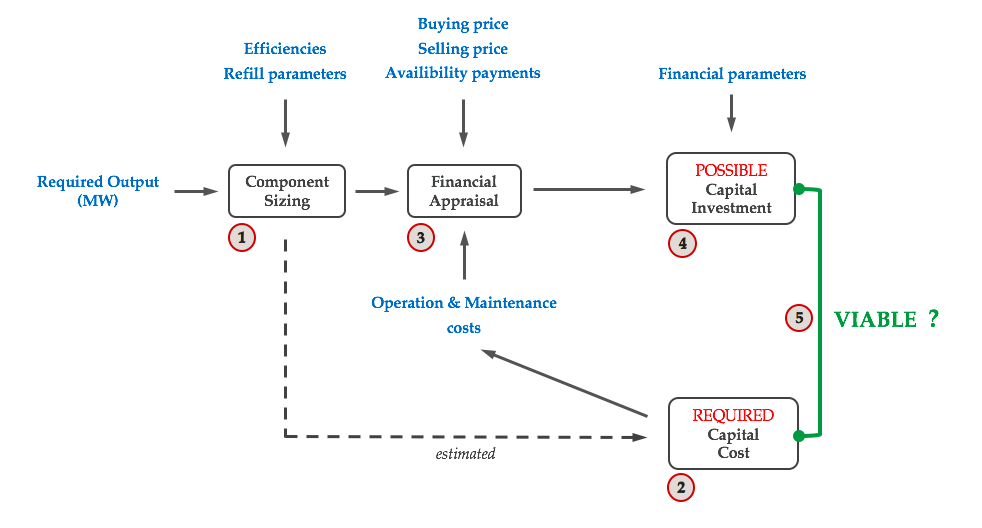Approach
Scope
Let's remind that this project aims to assess the cost-effectiveness of a novel type of peak power plant using hydrogen as a means of storage, whose the principle has been described before. We chose to align our module size on the National Grid STOR (Short Term Operation Reserves) requirements.
Therefore, we are investigating the viability of a module able to deliver 3 MW for 2 hours windows. In order to be as realistic as possible in this study, a lot of different parameters were to consider. Here are the three kind of elements we had to take into account:
As all these parameters are all interacting with each other and are likely to impact the cost-effectiveness of our system, they had to be embedded into the model we developed. More details about how they have been defined are given in the next page [Parameters Definition].
How to assess the cost-effectiveness of our system?
To evaluate the viability of our module, we chose to address the problem backward. Here are described the different steps of the process (these crucial steps are shown on the following diagram):
Thus, we will be able to claim that our system is cost-effective if in the given circumstances: the money we can make from the operation of our module is enough to cover its purchase cost, its installation cost, and its Operation & Maintenance costs. The elements appearing in blue on the Fig. 2 are the main inputs of our model. All together, they represent what we will call a scenario. In the next section, we explain how we defined some of these parameters and how they impact the viability of the system. |
H3P PROJECT - Modular Peak Power Plant


